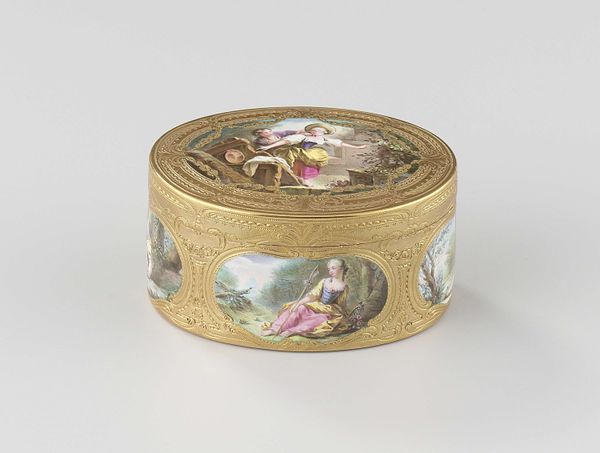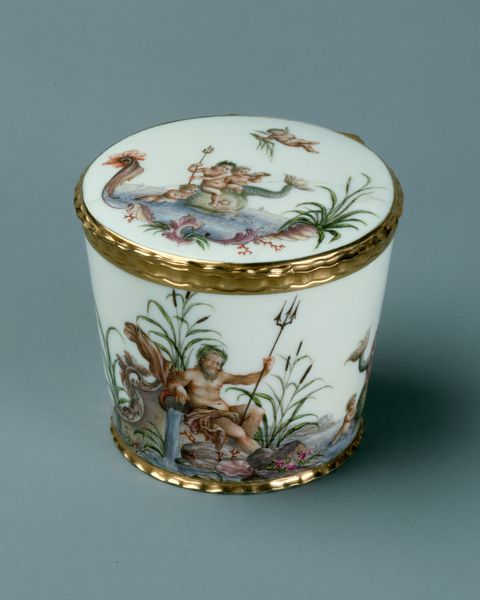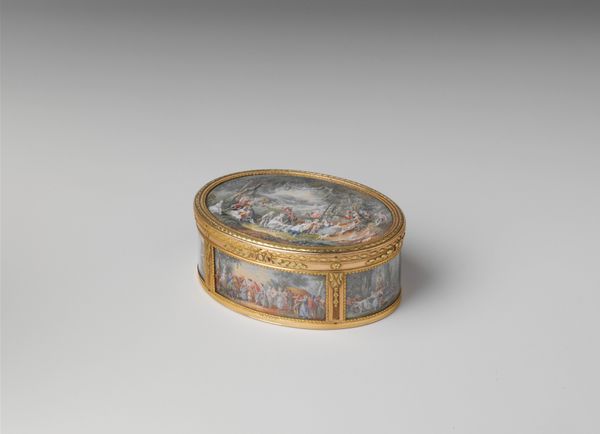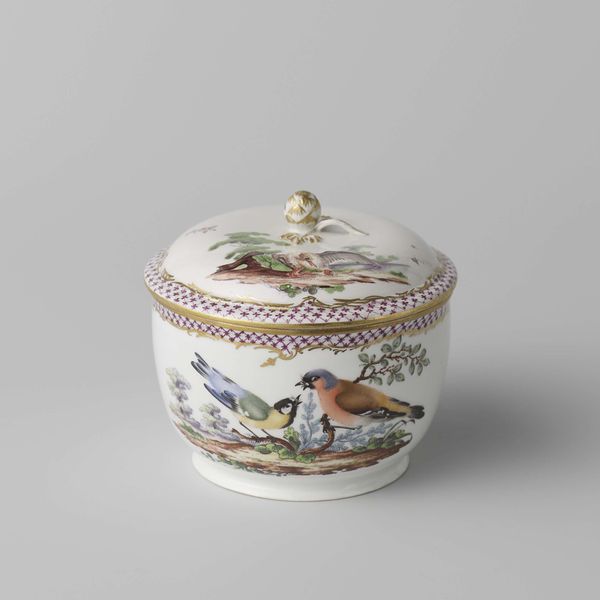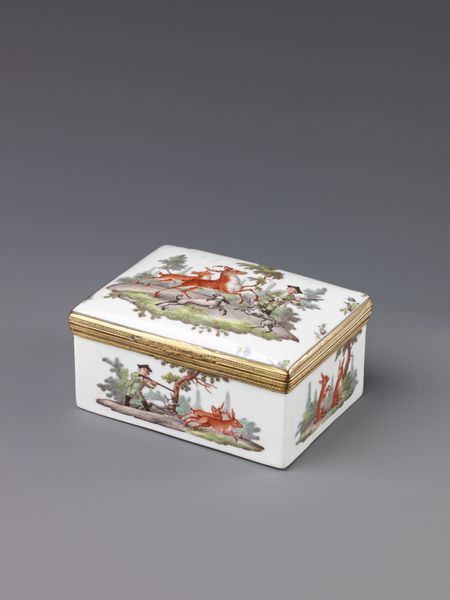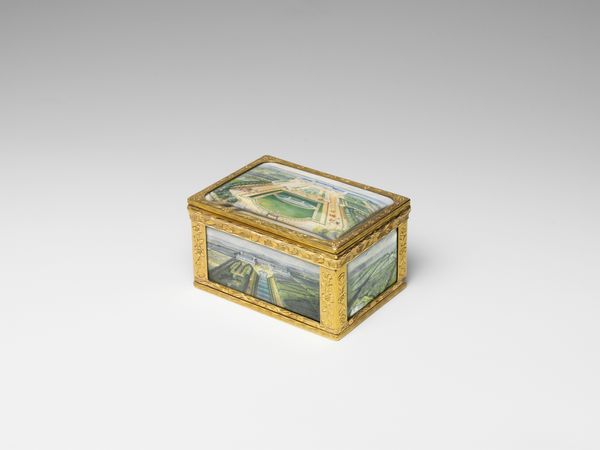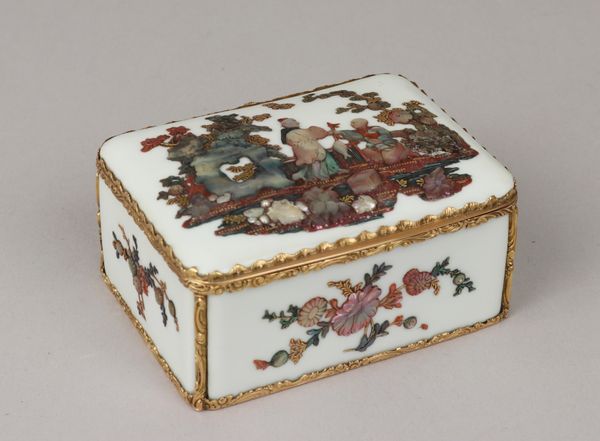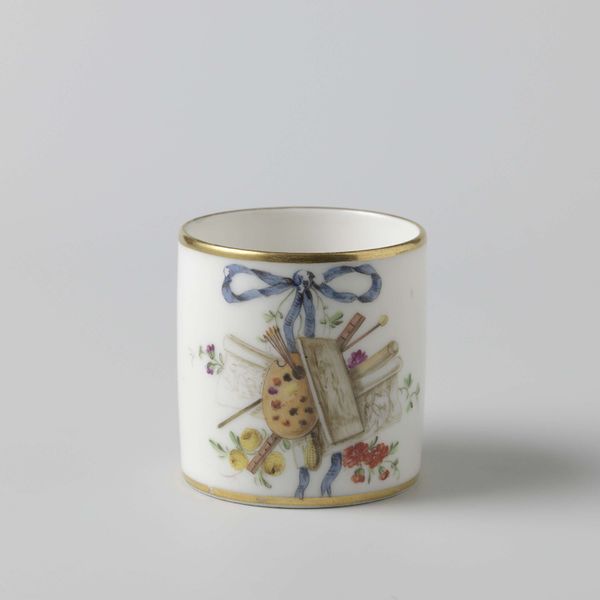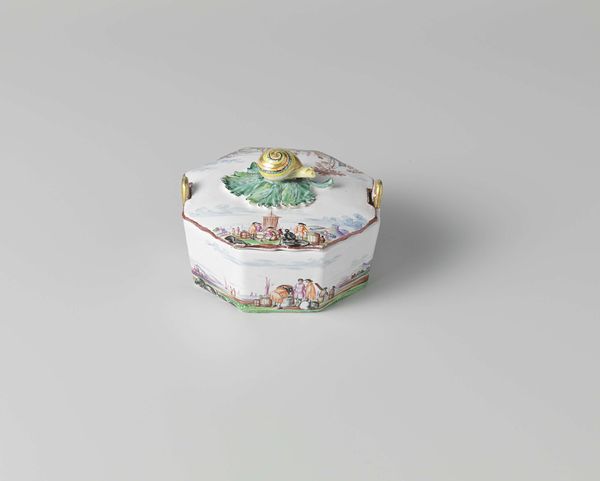
Dimensions: height 3.8 cm, width 5.4 cm, depth 9.8 cm
Copyright: Rijks Museum: Open Domain
Editor: Here we have a Snuffbox made around 1778 to 1782 by Loosdrecht, residing here at the Rijksmuseum. It’s made of gold and porcelain with a genre scene miniature. I find the delicate landscape and figures so charming. What can you tell me about it? Curator: I'm drawn to this piece as an example of Rococo artistry transformed into a commodity. Look at the division of labor involved: the mining and refining of gold, the shaping and firing of the porcelain body, and the painstaking application of these miniature landscapes. How were these processes organized, who benefited, and at what cost? Editor: I hadn't considered that at all! It just looks so…precious. Almost effortless. Curator: That’s precisely the illusion the object’s design intends to create, masking the extensive work behind it. Consider also, the cultural context; snuff, like this ornate box, became a status symbol linked to global trade routes, colonial exploitation, and evolving consumer habits. Editor: So the act of even using the box connects back to global economies and power dynamics of the 18th century. Curator: Precisely! The Snuffbox operates as both art object and a crucial element within a global network of extraction and consumption. Understanding its value goes beyond aesthetics and craftsmanship. We must understand its complex role in economic systems of the era. Editor: I never thought a small box could tell such a large story! Thinking about the gold and porcelain not just as materials, but as products of labor...it really changes the way I see it. Curator: Indeed, that reframes our perspective of such art; a closer inspection beyond aesthetics reveals significant historical, social, and financial contexts.

